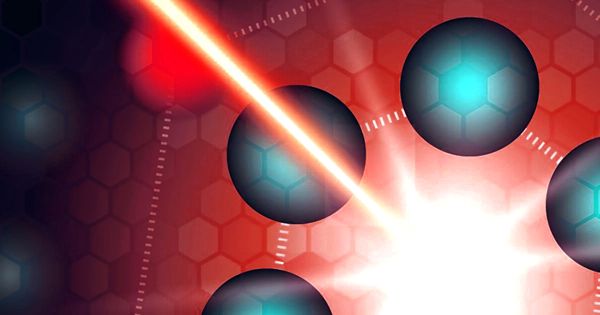Scientists first time visualized Dark Excitons or hidden particles hit the Spotlight
Researchers pioneered a groundbreaking new approach for the direct detection of previously concealed particles, called dark excitons. At the end of a decade-long search, in an exciting new class of incredibly small, two-dimensional semiconductors, scientists have for the first time directly visualized and analyzed enigmatic objects, called dark excitons, which cannot be seen by light.
This influential technique, described in the leading journal Science, could revolutionize research into two-dimensional semiconductors and excitons, with significant consequences for future technical devices, from solar cells and LEDs to smartphones and lasers.
Excitons are excited states of matter present in semiconductors – the main component in many of today’s innovations. They form as the electrons in the semiconductor material are excited by light to a higher energy state, leaving behind a “hole” at the energy level where the electron had previously existed.
“Holes are the absence of an electron, and so carry the opposite charge to an electron,” explained senior author Professor Keshav Dani, who leads the Femtosecond Spectroscopy Unit at the Okinawa Institute of Science and Technology Graduate University (OIST). “These opposite charges attract, and electrons and holes bind together to form excitons that can then move throughout the material.”
Excitons are extinguished in standard semiconductors in less than a few billionths of a second after their formation. Moreover, they can be ‘fragile,’ making it impossible for them to observe and exploit. But about a decade ago, physicists found two-dimensional semiconductors, where the suspense is more robust.
“Robust excitons give these materials really unique and exciting properties, so there have been a lot of intense studies worldwide aimed at using them to create new optoelectronic devices,” said co-first author Dr. Julien Madéo, a staff scientist in the OIST Femtosecond Spectroscopy Unit. “But at the moment, there is a major limitation with the standard experimental technique used to measure excitons.”
Researchers are now using optical spectroscopy techniques—essentially determining what wavelengths of light are absorbed, reflected, or released by semiconductor material—to reveal information on the energy status of excitons. But only a small portion of the image is taken by optical spectroscopy.
Scientists have known for a long time that only one form of an exciton, called bright excitons, can interfere with light. But there are also other types of excitons, including pulse-prohibited dark excitons. In this form of dark excitement, the electrons have a different momentum than the holes to which they are bound, which stops them from consuming light. It also implies that electrons in dark excitons have a different velocity than electrons in light excitons.
“We know they exist, but we cannot directly see them, we cannot directly probe them, and therefore we do not know how important they are, or how much they impact the optoelectronic properties of the material,” said Dr. Madéo.
Shining light on dark excitons
For the first time, to image dark excitons, the scientists updated an effective method that had previously been primarily used to research single, unbound electrons. “It was not clear if this strategy would operate with the excitons, which are composite particles with which the electrons are bound. A lot of analytical work has been conducted in the research world to address the feasibility of this method,” said Prof. Dani.
Their method stated that if a light ray carrying photons of high enough intensity is used to strike the excitons in the semiconductor material, the energy from the photons would smash the excitons and kick the electrons out of the material.
By determining the direction in which the electrons flow out of the material, scientists will then be able to calculate the original velocity of the electrons as they were part of the excitement. Therefore, scientists would not only be able to see but would also be able to discern, the light excitons from the dark excitons.
However, incorporating this new methodology needed several major technical problems to be overcome. Scientists wanted to produce light waves of high-energy ultraviolet photons capable of separating the excitons and knocking the electrons out of the material. The instrument wanted to be able to determine the energy and angle of these electrons. Furthermore, because the excitons are so short-lived, the instrument had to operate on a time scale of fewer than one thousand billionths of a second. Lastly, the instrument also needed adequate spatial resolution to measure 2D semiconductor samples, which are usually available only in micron-scale sizes.
The researchers saw that as predicted, both light and dark excitements were present in the semiconductor material. But to their dismay, the scientists also found that the dark enthusiasm dominated the material, outnumbering the light excitement. The team also found that under such conditions, when the excited electrons dispersed across the material and shifted momentum, the excitement might vary between being light or dark.
“The dominance of dark excitons and the interplay between dark and bright excitons suggest that dark excitons have an even greater impact on this new class of semiconductors than anticipated,” said Dr. Madéo.
This technique is a true innovation,” said Prof. Dani. “Not only does it provide the first observation of dark excitons and illuminate their properties, but it introduces the study of excitons and other excited particles into a new era.”















